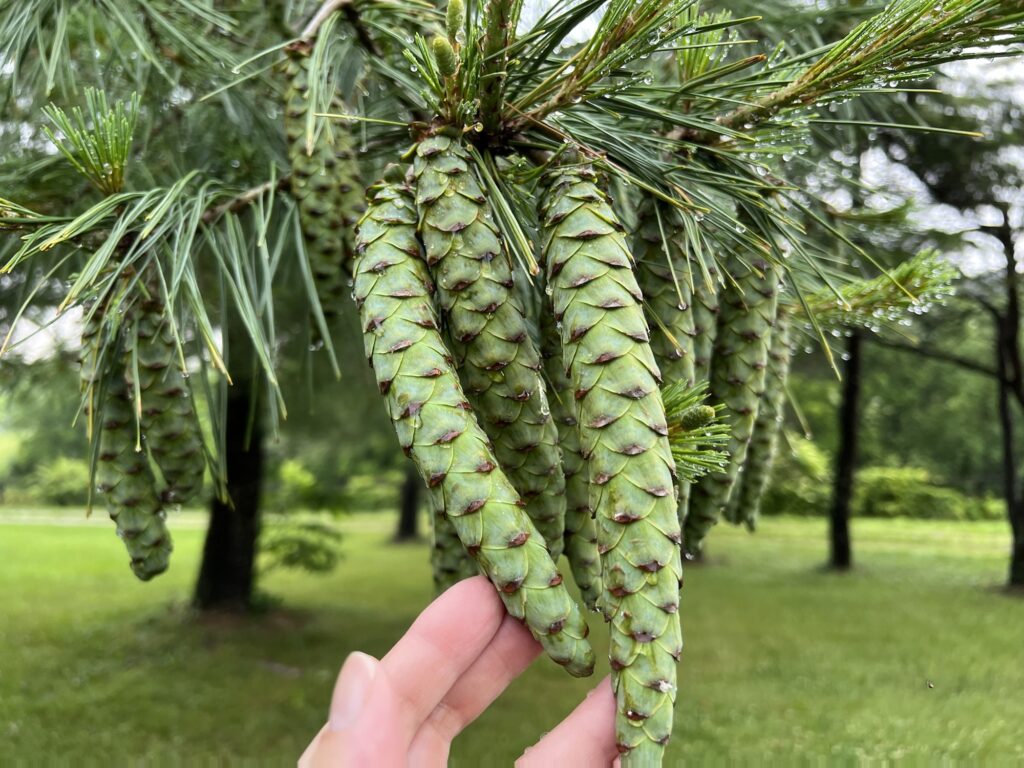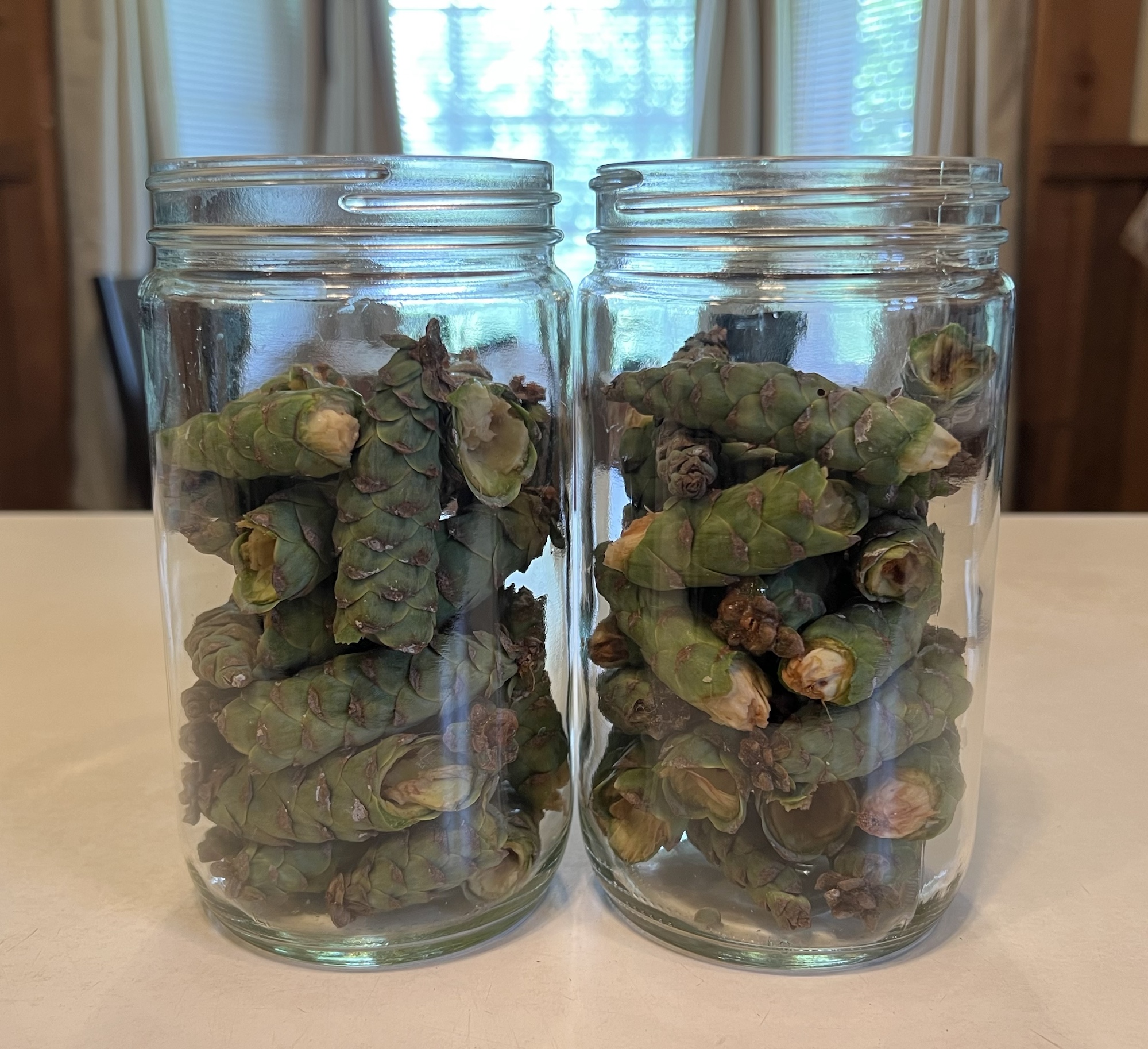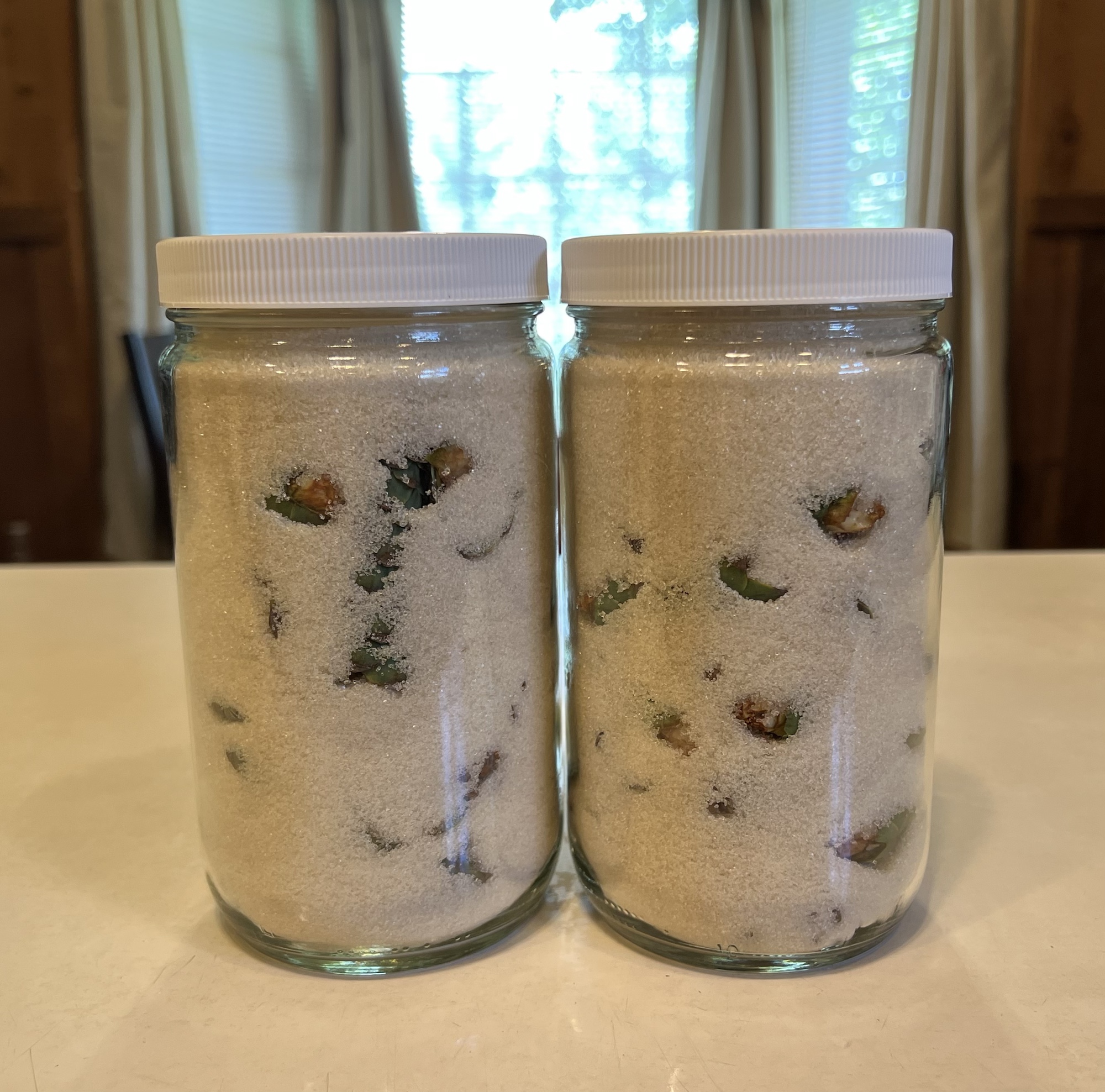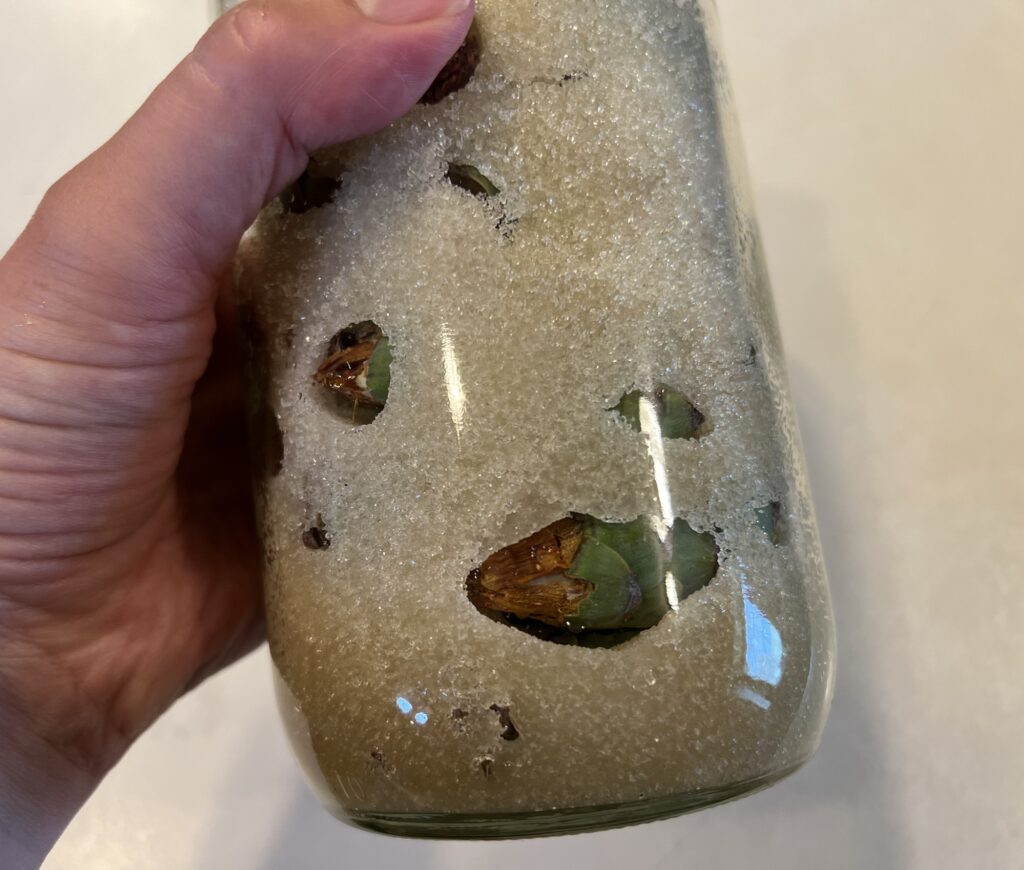
As we near the official start of summer here in the northern hemisphere, baby birds are fledging, flowers are blooming, and the pine treees are putting forth beautiful cones. I’m always looking for ways to utilize the bounty of the land, so when I discovered a wildcrafted syrup called Mugolio, I knew I’d be making some!
Mugolio is a pine cone syrup – a fermented pine cone syrup – with European roots. The cones, much like wild fruit and flowers, contain wild yeasts which, when combined with water and sugar, create the perfect medium for happy microbial activity. And if it’s fermentable, you know I’m going to try it!
As I’ve lived longer on the farm, I’ve come to know the flora and fauna better, and that knowledge has deepened my respect for them. Even though many of the edibles here are plentiful (or even deemed invasive, like Japanese honeysuckle, Lonicera japonica), I remain mindful that other living creatures depend on those berries, leaves, or flowers for survival. Just the other day, I saw small birds, either Downy or Hairy Woodpeckers, on the green pine cones, clearly eating something. As I surmised, the woodpeckers were eating the nutritious pine nuts (seeds) from within the cones.
The tree from which I harvested the windfall cones is a mature Eastern White Pine, from which I periodically collect windfall needles for water kefir and liqueurs. The cones on the tree can grow very large, easily 6 inches in length. It’s quite a sight to behold the large green cones weighing down the end of the branches.

Gathering the windfall cones was quick and easy. I selected just the green, soft, still-closed ones; these are full of liquid which will be expelled during maceration, a key part of the process. That liquid will also help create the proper environment for fermentation.
I chose to break the cones into 2 or 3 pieces, depending on their size, to make it easier to pack them into the jars. I used a canning funnel to ensure that all of the sugar actually made it into the jar, too, and highly recommend it, particularly if the jar has a smaller mouth.


After the sugar is added to the jars, the waiting game begins. Maceration will ensue and the fermentation will occur. This process takes 2 months, with occasional “burping” of the jars (as gases will build up from the fermentation). I’m looking forward to seeing the very-full jars gradually lose volume as maceration takes place, and also to see what the ferment looks like – wild ferments are truly fascinating and unpredictable. What’s more exciting than seeing what the native microbes will create in these jars? I know – not much!

Ultimately, while the Mugolio will not be probiotic because the live cultures will be cooked in the final step of syrup-making, the fermentation process will play an important part in creating the depth of flavor in the finished product. Stay tuned for updates!
Tip: handling the cones will transfer sticky pitch to skin. Rubbing hand sanitizer (containing at least 60% isopropyl alcohol) to your hands and rubbing will remove it, and you probably already have it handy!

Hi this likes so great! can you use douglas fir cones?
Hi – thanks and good question! The recipe’s author uses other cones from other conifer species in Mugolio. This site also lists some toxic trees that are either conifers (or similar) that should not be used: https://www.primalsurvivor.net/can-you-eat-pine-cones/.